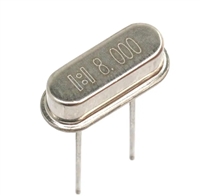ADN2530
Data Sheet
Assuming the dc voltage drop across L1, L2, L3, and L4 = 0 V
and IMOD = 10 mA, the minimum voltage at the modulation
output pins is equal to
DESIGN EXAMPLE
This design example covers:
•
•
Headroom calculations for IBIAS, IMODP, and IMODN pins.
VCC − (IMOD × 50)/2 = VCC − 0.25
Calculation of the typical voltage required at the BSET
and MSET pins to produce the desired bias and
modulation currents.
VCC − 0.25 > VCC − 0.7 V, which satisfies the requirement
The maximum voltage at the modulation output pins is equal to
VCC + (IMOD × 50)/2 = VCC + 0.25
•
Calculations of the IBIAS monitor accuracy over the IBIAS
current range.
VCC + 0.25 < VCC + 0.7 V, which satisfies the requirement
This design example assumes that the impedance of the
TOSA is 60 Ω, the forward voltage of the VCSEL at low current
is VF = 1.2 V, IBIAS = 10 mA, IMOD = 10 mA, and VCC = 3.3 V.
Headroom calculations must be repeated for the minimum and
maximum values of the required IBIAS and IMOD ranges to
ensure proper device operation over all operating conditions.
Headroom Calculations
BSET and MSET Pin Voltage Calculation
To ensure proper device operation, the voltages on the IBIAS,
IMODP, and IMODN pins must meet the compliance voltage
specifications in Table 1.
To set the desired bias and modulation currents, the BSET and
MSET pins of the ADN2530 must be driven with the appropriate
dc voltage. The voltage range required at the BSET pin to generate
the required IBIAS range can be calculated using the BSET voltage
to IBIAS gain specified in Table 1. Assuming that IBIAS = 10 mA
and the typical IBIAS/VBSET ratio of 20 mA/V, the BSET voltage
is given by
Considering the typical application circuit shown in Figure 39,
the voltage at the IBIAS pin can be written as
V
IBIAS = VCC − VF − (IBIAS × RTOSA) − VLA
where:
IBIAS (mA)
20 mA/V
10
20
VBSET
=
=
= 0.5 V
VCC is the supply voltage.
VF is the forward voltage across the laser at low current.
The BSET voltage range can be calculated using the required
IBIAS range and the minimum and maximum BSET voltage to
IBIAS gain values specified in Table 1.
R
TOSA is the resistance of the TOSA.
LA is the dc voltage drop across L5, L6, L7, and L8.
V
For proper operation, the minimum voltage at the IBIAS pin
should be greater than 0.55 V, as specified by the minimum
IBIAS compliance specification in Table 1.
The voltage required at the MSET pin to produce the desired
modulation current can be calculated using
IMOD
K
VMSET
=
Assuming that the voltage drop across the 50 Ω transmission lines
is negligible and that VLA = 0 V, V F = 1.2 V, and IBIAS = 10 mA,
where K is the MSET voltage to IMOD ratio.
V
V
IBIAS = 3.3 − 1.2 − (0.01 × 60) = 1.5 V
The value of K depends on the actual resistance of the TOSA
and can be obtained from Figure 34. For a TOSA resistance of
60 Ω, the typical value of K = 24 mA/V. Assuming that IMOD =
10 mA and using the preceding equation, the MSET voltage is
given by
IBIAS = 1.5 V > 0.55 V, which satisfies the requirement
The maximum voltage at the IBIAS pin must be less than the
maximum IBIAS compliance specification as described by
V
COMPLIANCE_MAX = VCC − 0.75 − 22 × IBIAS (A)
For this example,
VCOMPLIANCE_MAX = VCC – 0.75 − 22 × 0.01 = 2.33 V
IBIAS = 1.5 V < 2.33 V, which satisfies the requirement
IMOD (mA)
24 mA/V
10
24
VMSET
=
=
= 0.42 V
The MSET voltage range can be calculated using the required
IMOD range and the minimum and maximum K values. These can
be obtained from the minimum and maximum curves in Figure 34.
V
To calculate the headroom at the modulation current pins
(IMODP and IMODN), the voltage has a dc component equal
to VCC due to the ac-coupled configuration and a swing equal
to IMOD × 50 Ω, as RTOSA < 100 Ω. For proper operation of the
ADN2530, the voltage at each modulation output pin should be
within the normal operation region shown in Figure 35.
Rev. B | Page 16 of 20






 资料手册解读:UC3842参数和管脚说明
资料手册解读:UC3842参数和管脚说明

 一文带你了解无源晶振的负载电容为何要加两颗谐振电容CL1和CL2
一文带你了解无源晶振的负载电容为何要加两颗谐振电容CL1和CL2

 玻璃管保险丝与陶瓷管保险丝:区别与替代性探讨
玻璃管保险丝与陶瓷管保险丝:区别与替代性探讨

 PCF8574资料解读:主要参数分析、引脚说明
PCF8574资料解读:主要参数分析、引脚说明
